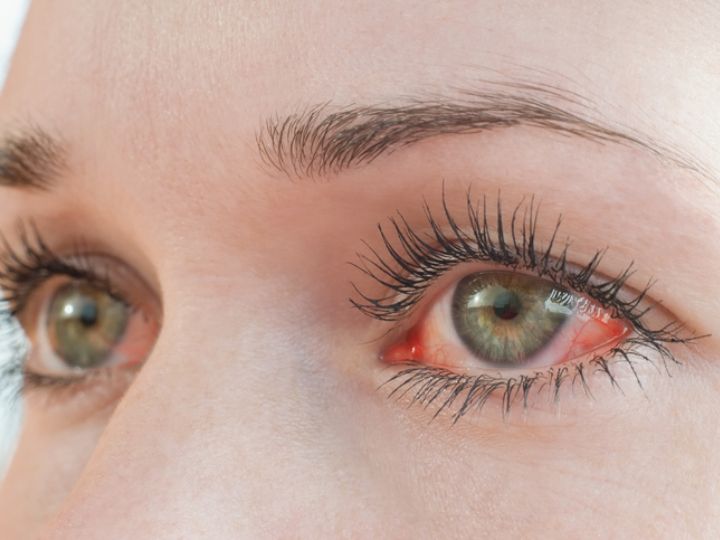All Categories
Featured

While most individuals comprehend the relevance of securing their skin from the sun, the damaging impacts of ultraviolet (UV) rays on eye wellness commonly go neglected. Nevertheless, too much direct exposure to UV radiation can bring about a variety of eye problems, a few of which can cause long-term damage. Whether you're taking in the sunlight on a summertime day or walking outdoors on an over cast mid-day, safeguarding your eyes from UV rays is essential. Here's what you need to learn about the impacts of UV radiation on your eyes and exactly how to shield them.
What Are UV Rays? UV rays are a type of electromagnetic radiation sent out by the sun. They are categorized right into three types:
UVA Rays: These pass through deep right into the skin and eyes and can add to long-term damages. UVB Rays: These rays are extra extreme than UVA and are primarily responsible for surface-level damage to the eyes and skin. UVC Rays: These are one of the most dangerous but are mainly absorbed by the Planet's ozone layer and don't normally reach us. UVA and UVB rays are the main offenders behind eye-related damages.
Short-Term Impacts of UV Exposure on the Eyes. Even short-term exposure to extreme UV rays can damage your eyes. One typical condition triggered by this is photokeratitis, or "sunburn of the eye." Signs of photokeratitis consist of:
Painful, red eyes. Level of sensitivity to light. Tearing or excessive watering. Short-term vision loss or blurry vision. Photokeratitis is generally short-lived, however it works as a warning of how harmful UV direct exposure can be, also in little doses.
Long-Term Results of UV Exposure. Extended exposure to UV radiation can bring about more significant and long-term eye problems, such as:
Cataracts: UV rays can accelerate the formation of cataracts, a condition that creates clouding of the eye's natural lens, bring about blurry vision and, if unattended, blindness.

Macular Degeneration: UV exposure can damage the retina, particularly the macula, boosting the threat of age-related macular degeneration (AMD), which influences main vision.
Pterygium: A development of tissue on the white component of the eye that can cross the cornea, creating pain, redness, and vision issues.
Pinguecula: UV exposure can trigger yellow-colored down payments to create on the conjunctiva, leading to irritability and dryness.
Skin Cancer Around the Eyes: The fragile skin surrounding your eyes is very prone to UV radiation, enhancing the threat of skin cancers like basal cell cancer and squamous cell cancer.
How to Protect Your Eyes from UV Rays. Safeguarding your eyes from UV rays is straightforward and needs a few conscious habits:
Spend in Top Quality Sunglasses: Choose sunglasses that obstruct 100% of UVA and UVB rays. Search for tags that specify "UV 400" security. Wrap-around styles are ideal as they obstruct UV rays from the sides as well.
Put On a Wide-Brimmed Hat: A hat with a border at the very least three inches wide can dramatically decrease UV direct exposure to your eyes and face.
Restriction Exposure During Top Hours: UV rays are toughest in between 10 a.m. and 4 p.m. If you must be outdoors during these hours, make certain you're properly safeguarded.
Do Not Be Tricked by Clouds: UV rays can penetrate through clouds, so it is very important to wear sunglasses also on overcast days.
Shield Your Eyes Year-Round: Snow, sand, and water can mirror UV rays, intensifying their effects. Eye defense isn't just for warm summertime days-- ensure you're covered in all periods.
Use UV-Blocking Contact Lenses: Several contact lenses now include UV protection. If you use get in touches with, ask your eye medical professional concerning lenses with built-in UV filters for added security.
Motivate Eye Protection for Kid: Kid's eyes are much more conscious UV rays due to the fact that their lenses are clearer, allowing more radiation to get to the retina. See to it they put on sunglasses and hats throughout outdoor tasks.
Regular Eye Examinations. Normal check-ups with an eye care specialist are important for early discovery of any type of UV-related damages. An optometrist or eye doctor can evaluate your eyes, suggest safety measures, and spot conditions like cataracts or macular degeneration early on.
Final thought. UV rays present a considerable hazard to eye wellness, and their impacts can accumulate with time. With the right safety measures, you can lessen these dangers and safeguard your vision. By wearing UV-blocking sunglasses, restricting sun exposure during height hours, and staying consistent with eye examinations, you can guarantee your eyes remain healthy and your vision remains clear for many years to come. Safeguarding your eyes from UV radiation isn't almost comfort-- it's an important action in preserving your lasting eye health.
Latest Posts
Benefits of NAPA AutoCare? Montclare Auto Repair Breaks It Down
Why Yesterday's Creekside Tavern is the Perfect Spot for Your Following Night Out
A Historical Coastline Destination with Modern Thrills
More
Latest Posts
Benefits of NAPA AutoCare? Montclare Auto Repair Breaks It Down
Why Yesterday's Creekside Tavern is the Perfect Spot for Your Following Night Out
A Historical Coastline Destination with Modern Thrills